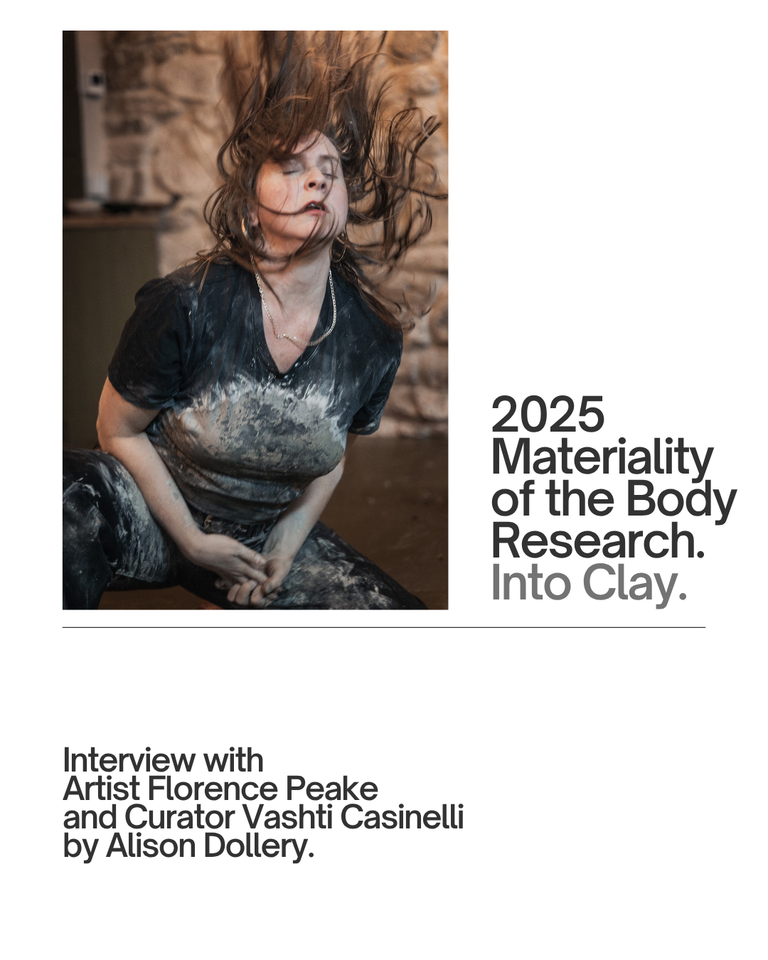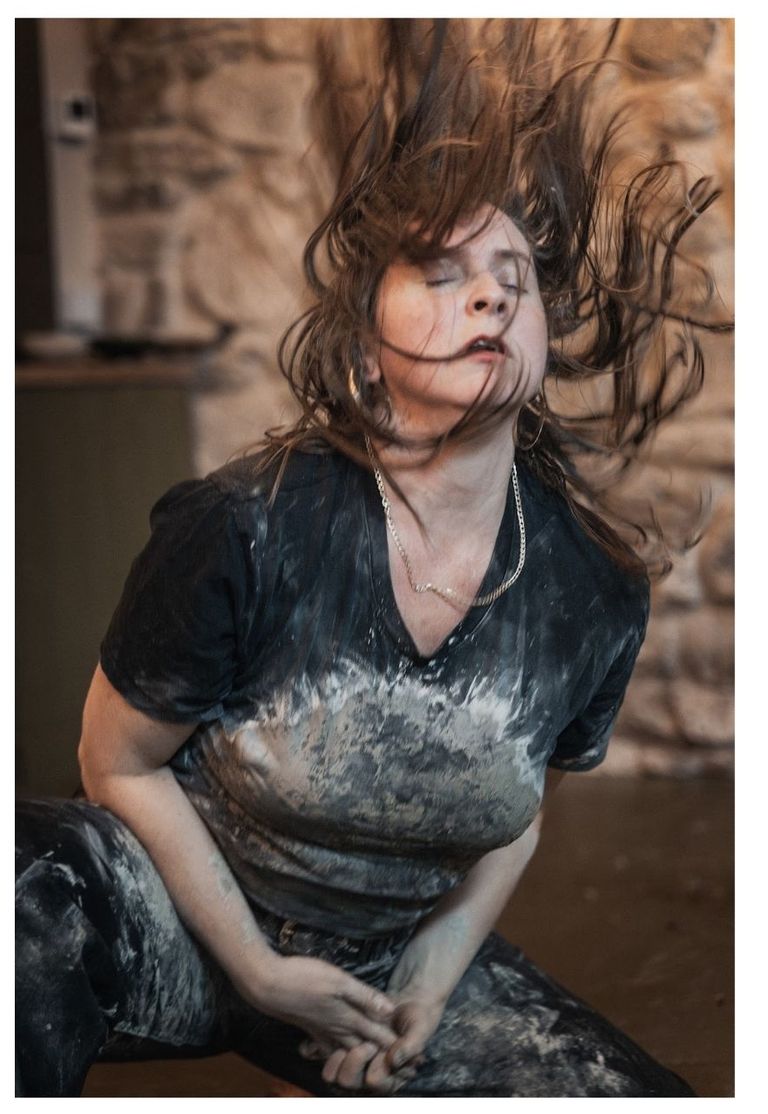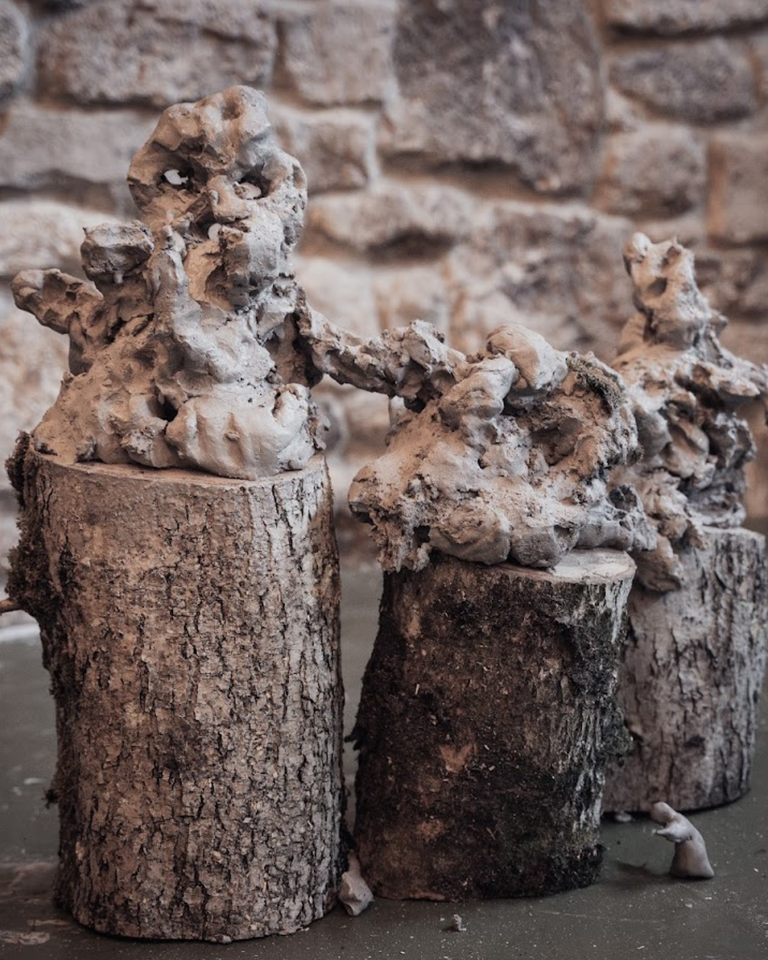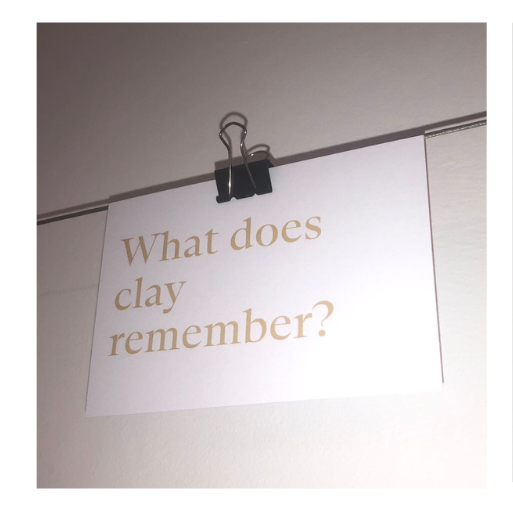


Florence Peake Voicings Performed at Southcombe Barn July 2025.

Florence Peake Voicings Performed at Southcombe Barn July 2025.
Materiality of the Body Interview Into Clay 2025 with Artist Florence Peake and Curator Vashti Casinelli, by Alison Dollery.
Body as a Canvas Research.
Alison Dollery: What prompted you to use the body in your art practice and entanglement with the Materiality of Clay?
Florence Peake: I have been involved in dance for more than 30 years. I work in the field of what is often referred to as somatic dance. I have been teaching Skinner releasing technique and working with choreography and movement as a central enquiry in my practice. I am interested in the interior body and the experience of having a body, as well as how it moves through its given environment, which includes the interface and connection with materials, surfaces, and objects. I have examined how materials characterise the body through their inherent properties—plaster, clay, and found objects. It is not specific to clay, but I have a massive love for it and have been humbled by exploring it in live performance.
I have been working with clay as a queer medium because of its properties of transformation and fluidity between states. I have found it to be both bodily and physical, as well as very psychic, holding and absorbing energy, thoughts, and memories through touch.
Alison Dollery: Florence, can you define the concept of materiality in your work and your body? I have seen in previous interviews that your job is theoretically informed. Could you provide the reader with a deeper insight into your theoretical practice and its relationship to the materiality of your body and work?
Florence Peake: Materiality relates to matter, the physical, and the material world: substance and the properties of a given object or physical material that my body interacts with. I am interested in the paradox of how this concrete reality is also energetic and, at a subatomic level, vibrates and operates differently than how the material is presented. Vibrant Matter by Jane Bennett and discourse around new materialism have been really exciting to read in connection to these ideas.
Alison Dollery: Do you feel that women artists who use or represent their bodies/experiences are/have been underrepresented in the art world?
Florence Peake: Yes, unfortunately, this is still the situation. There are numerous books and resources on researching exclusions of women artists, alongside other marginalised groups.
Vashti Casinelli: Yes. This is a crucial consideration for the artists I now represent. The body has societal conditioning, but it is multidimensional and holds many different realities. It has the pain of socialised conditioning, where we have not been empowered to have a choice in how we want to inhabit our bodies/physicality. However, the body can also be a portal to experiencing great freedom. The intuitive, instinctual body is a force and a resource for change, as well as a force of resistance against fascism and control—it holds wisdom.
Alison Dollery: Curatorially, Vashti, can you reflect on any of the questions above and the importance of what you describe as an unfolding of historical women artists in your practice?
Vashti Casinelli: The wider Dartmoor Clayscapes project brought together women from more than 20 countries within Devon's refugee communities to collaborate with sculptor Arabel Lebrusan and ceramicist Kay Lyons Miller through the medium of clay. Working curatorially with such a malleable material as clay helped us initiate a discussion about kinaesthetic empathy, while allowing stories to unfold organically in this group setting and with a material that holds such deep, historical significance.
Florence’s closing performance demonstrated poignantly how the body’s interactions with clay and the group can be used to unfold our own experiences together, while simultaneously creating new, contemporary, artistic histories remembered through clay.

Vasthi Casinelli: Homeland is a site-specific, sculptural installation in which the public was invited to join artist Arabel Lebrus in sculpting migratory swallows using local clay.
Alison Dollery: Each of these migratory swallows, embodied in clay, resonates for me as it identifies the materiality of humans through identity and a lived materiality, or what I call body-proxy stand-ins for human experience. Again, you can feel the materiality of the body embedded in clay through the question asked by the audience to Iman, “What does clay remember?”

About
Dartmoor Clayscapes: Empathic Journeys through Clay was a programme of arts featuring Iman Datoo, Arabel Lebrusan and Florence Peake that engaged with the materiality of clay ‘kinaesthetically’ or through tactile learning.
The programme was held at Southcombe Barn, Widecombe-in-the-Moor, and comprised workshops, interactive performances, and films to reflect on contemporary issues such as migration and ecological crisis, supporting the development of empathetic responses to both human and more-than-human forms of life.